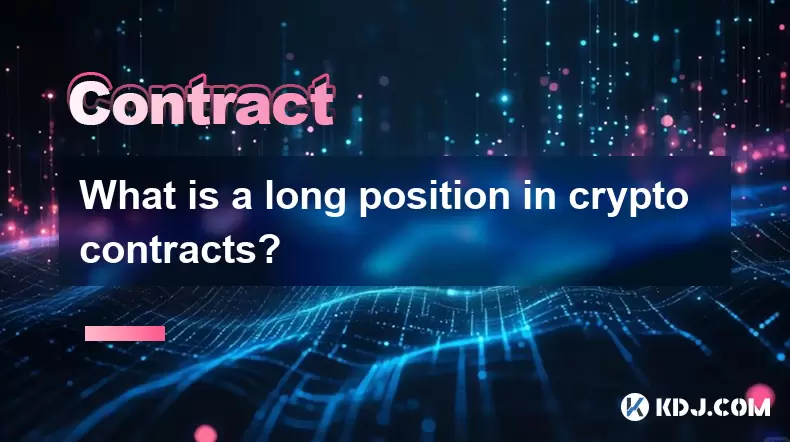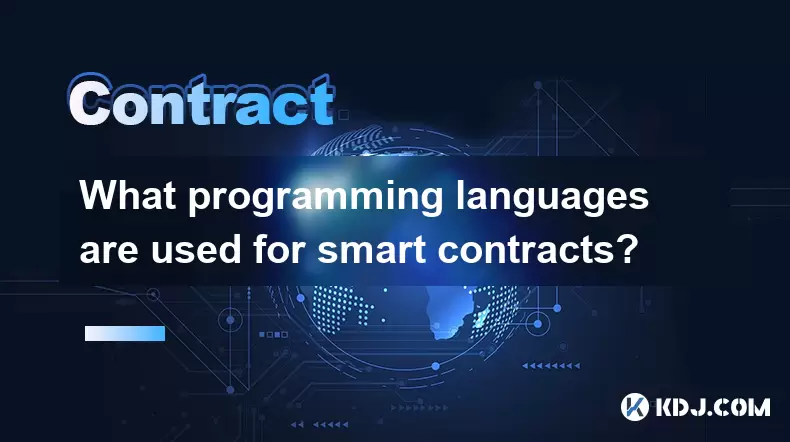-
 Bitcoin
Bitcoin $116200
1.84% -
 Ethereum
Ethereum $3841
6.86% -
 XRP
XRP $3.070
4.25% -
 Tether USDt
Tether USDt $1.000
0.02% -
 BNB
BNB $774.4
1.72% -
 Solana
Solana $172.3
5.17% -
 USDC
USDC $0.9999
0.01% -
 Dogecoin
Dogecoin $0.2136
6.85% -
 TRON
TRON $0.3391
1.21% -
 Cardano
Cardano $0.7667
5.76% -
 Hyperliquid
Hyperliquid $39.10
4.30% -
 Sui
Sui $3.724
9.37% -
 Stellar
Stellar $0.4139
5.86% -
 Chainlink
Chainlink $17.35
6.09% -
 Bitcoin Cash
Bitcoin Cash $573.7
2.52% -
 Hedera
Hedera $0.2518
5.39% -
 Ethena USDe
Ethena USDe $1.001
0.02% -
 Avalanche
Avalanche $22.68
3.57% -
 Litecoin
Litecoin $120.4
3.89% -
 UNUS SED LEO
UNUS SED LEO $8.951
-0.40% -
 Toncoin
Toncoin $3.312
4.62% -
 Shiba Inu
Shiba Inu $0.00001263
4.23% -
 Uniswap
Uniswap $10.14
6.89% -
 Polkadot
Polkadot $3.778
5.04% -
 Dai
Dai $1.000
0.01% -
 Monero
Monero $276.9
-4.52% -
 Bitget Token
Bitget Token $4.394
1.57% -
 Cronos
Cronos $0.1475
6.05% -
 Pepe
Pepe $0.00001081
5.27% -
 Aave
Aave $274.5
7.59%
What is a long position in crypto contracts?
A long position in crypto contracts means buying a futures or perpetual contract, betting the asset's price will rise, allowing traders to profit from upward price movements using leverage.
Aug 07, 2025 at 06:29 pm

Understanding the Concept of a Long Position in Crypto Contracts
A long position in crypto contracts refers to a trading strategy where a trader buys a cryptocurrency futures or perpetual contract with the expectation that the price of the underlying asset will rise in the future. By opening a long position, the trader agrees to purchase the asset at a current price, aiming to sell it later at a higher price to realize a profit. This approach mirrors traditional investing but is executed within the framework of derivative instruments, allowing for leverage and more complex risk management.
When a trader enters a long position, they are essentially expressing bullish sentiment toward the asset. For example, if Bitcoin is trading at $30,000 and a trader believes its value will increase, they can open a long position on a futures contract tied to Bitcoin. If the price climbs to $35,000, the trader can close the position and capture the difference as profit, minus fees and funding rates (in perpetual contracts).
It is important to distinguish between holding the actual cryptocurrency and holding a long position in a derivative contract. In a spot market, buying Bitcoin means owning the asset outright. In contrast, a long position in a futures contract does not involve ownership of the asset; it is a financial agreement based on price movement.
How to Open a Long Position on a Crypto Derivatives Platform
Opening a long position on a crypto derivatives exchange involves several precise steps. Traders must first select a reputable platform that offers futures or perpetual contracts, such as Binance, Bybit, or OKX. After logging in, navigate to the derivatives trading section.
- Ensure your account has sufficient collateral in the form of USDT, USD, or another accepted stablecoin or cryptocurrency.
- Choose the specific contract, such as BTC/USDT perpetual, and verify the current market price.
- Select the leverage level, which amplifies both potential gains and losses. Common options range from 2x to 125x depending on the platform and contract.
- Switch the order type to “Long” or select “Buy” in the interface.
- Enter the desired contract size or amount to invest.
- Review the liquidation price and margin requirements before confirming.
Once the order is executed, the long position is active. The trader’s profit and loss will fluctuate in real time based on the market price of the underlying asset. Monitoring the position closely is essential due to the volatility of cryptocurrencies and the risks associated with leveraged trading.
The Role of Leverage in Long Positions
Leverage is a critical component of long positions in crypto contracts. It allows traders to control a larger position with a smaller amount of capital. For instance, using 10x leverage means that a trader can control $10,000 worth of Bitcoin with only $1,000 in margin.
While leverage can significantly increase returns, it also raises the risk of liquidation. If the market moves against the long position and the price drops to the liquidation level, the exchange will automatically close the position to prevent further losses. The liquidation price is calculated based on the entry price, leverage, and fees.
Traders should carefully assess their risk tolerance before applying high leverage. Using tools such as stop-loss orders can help mitigate potential losses. These orders automatically close the position when the price reaches a predetermined level, preserving a portion of the margin.
It is also important to consider funding rates in perpetual contracts. When holding a long position, traders may have to pay funding to those in short positions if the funding rate is positive, which occurs when longs dominate the market.
Differences Between Long Positions in Futures and Perpetual Contracts
Crypto derivatives come in two primary forms: futures contracts and perpetual contracts. While both allow for long positions, they operate under different mechanisms.
Futures contracts have a fixed expiration date. A long position in a futures contract must be settled on that date, either through cash settlement or physical delivery, depending on the exchange. Traders must manage their positions before expiration or roll them over to a new contract.
Perpetual contracts, on the other hand, do not expire. This allows traders to hold a long position indefinitely, provided they maintain sufficient margin and pay periodic funding fees. The funding mechanism helps keep the contract price close to the spot price of the underlying asset.
Both contract types support leverage and margin trading, but perpetual contracts are more popular among retail traders due to their flexibility. However, futures contracts are often preferred for hedging and institutional strategies.
Risks and Considerations When Holding a Long Position
Holding a long position in a volatile market like cryptocurrency carries several risks. The most immediate is price volatility. Sudden market downturns can trigger liquidations, especially when high leverage is used.
Another risk is margin calls. If the value of the collateral drops below the maintenance margin level, the exchange may require additional funds or close the position. Traders should monitor their margin ratio and avoid overextending their capital.
Market manipulation and whale activity can also impact long positions. Large traders or institutions may move prices sharply, triggering cascading liquidations in leveraged markets. This phenomenon is often observed during periods of high volatility or major news events.
Additionally, technical risks such as platform outages or connectivity issues can prevent timely position management. Ensuring a stable internet connection and using exchanges with robust infrastructure is essential.
How to Close a Long Position Effectively
Closing a long position is just as important as opening one. To exit, traders must place a sell order for the same contract size they initially bought.
- Navigate to the open positions tab on the exchange.
- Locate the active long position.
- Click “Close” or manually place a sell order at market or limit price.
- Confirm the transaction and verify the profit or loss in the trade history.
Using a limit order to close allows control over the exit price, while a market order ensures immediate execution at the current price. Traders should consider slippage, especially in low-liquidity markets.
After closing, the realized PnL (profit and loss) is credited to the wallet, and any remaining margin is released. It is advisable to review the trade performance and adjust future strategies accordingly.
Frequently Asked Questions
Can I go long on altcoins using futures contracts?
Yes, many exchanges offer futures and perpetual contracts for major altcoins such as Ethereum, Solana, and Cardano. The process is identical to going long on Bitcoin—select the contract, set leverage, and open a long position.
What happens if my long position gets liquidated?
If the price falls to your liquidation price, the exchange will automatically close your position. You will lose the margin allocated to that trade, and no further losses will be incurred beyond that point.
Do I need to pay fees when opening a long position?
Yes, trading fees apply when opening and closing positions. These are typically a percentage of the trade value and vary by platform and order type (maker or taker).
Is it possible to hold a long position over weekends or during market closures?
Crypto markets operate 24/7, so long positions can be held at any time, including weekends. However, lower liquidity during off-peak hours may increase slippage and volatility risk.
Disclaimer:info@kdj.com
The information provided is not trading advice. kdj.com does not assume any responsibility for any investments made based on the information provided in this article. Cryptocurrencies are highly volatile and it is highly recommended that you invest with caution after thorough research!
If you believe that the content used on this website infringes your copyright, please contact us immediately (info@kdj.com) and we will delete it promptly.
- Ollama Turbo & GPT-OSS: Revolutionizing AI Model Accessibility and Speed
- 2025-08-07 20:29:33
- Bitcoin Ordinals: NFTs Evolving Bitcoin or a Fleeting Fad?
- 2025-08-07 20:29:33
- BlockchainFX, Bitcoin Swift, Crypto Presales: What's the Hype?
- 2025-08-07 19:10:13
- Pepe Dollar (PEPD) vs. SPX6900: The Meme Coin Battle of 2025
- 2025-08-07 19:50:12
- XRP Investment Regret: Are You Missing Out on the Next Big Thing?
- 2025-08-07 19:50:12
- XRPINU: More Than Just a Meme? Roadmap, Liquidity, and the Future of Funny Money
- 2025-08-07 19:56:46
Related knowledge

What programming languages are used for smart contracts?
Aug 07,2025 at 06:07pm
Understanding Smart Contracts and Their Execution EnvironmentSmart contracts are self-executing programs deployed on blockchain networks that automati...

What is a long position in crypto contracts?
Aug 07,2025 at 06:29pm
Understanding the Concept of a Long Position in Crypto ContractsA long position in crypto contracts refers to a trading strategy where a trader buys a...

Why is my Bitstamp futures position being liquidated?
Jul 23,2025 at 11:08am
Understanding Futures Liquidation on BitstampFutures trading on Bitstamp involves borrowing funds to open leveraged positions, which amplifies both po...

How to report Bitstamp futures for taxes?
Jul 30,2025 at 08:35am
Understanding Bitstamp Futures and Taxable EventsWhen trading Bitstamp futures, it’s essential to recognize that these financial instruments are treat...

Does Bitstamp offer inverse contracts?
Jul 23,2025 at 01:28pm
Understanding Inverse Contracts in Cryptocurrency TradingIn the realm of cryptocurrency derivatives, inverse contracts are a specific type of futures ...

What is the difference between futures and perpetuals on Bitstamp?
Jul 27,2025 at 05:08am
Understanding Futures Contracts on BitstampFutures contracts on Bitstamp are financial derivatives that allow traders to speculate on the future price...

What programming languages are used for smart contracts?
Aug 07,2025 at 06:07pm
Understanding Smart Contracts and Their Execution EnvironmentSmart contracts are self-executing programs deployed on blockchain networks that automati...

What is a long position in crypto contracts?
Aug 07,2025 at 06:29pm
Understanding the Concept of a Long Position in Crypto ContractsA long position in crypto contracts refers to a trading strategy where a trader buys a...

Why is my Bitstamp futures position being liquidated?
Jul 23,2025 at 11:08am
Understanding Futures Liquidation on BitstampFutures trading on Bitstamp involves borrowing funds to open leveraged positions, which amplifies both po...

How to report Bitstamp futures for taxes?
Jul 30,2025 at 08:35am
Understanding Bitstamp Futures and Taxable EventsWhen trading Bitstamp futures, it’s essential to recognize that these financial instruments are treat...

Does Bitstamp offer inverse contracts?
Jul 23,2025 at 01:28pm
Understanding Inverse Contracts in Cryptocurrency TradingIn the realm of cryptocurrency derivatives, inverse contracts are a specific type of futures ...

What is the difference between futures and perpetuals on Bitstamp?
Jul 27,2025 at 05:08am
Understanding Futures Contracts on BitstampFutures contracts on Bitstamp are financial derivatives that allow traders to speculate on the future price...
See all articles

























































































